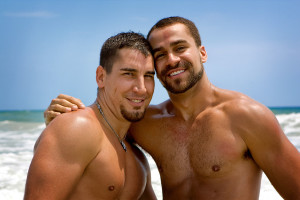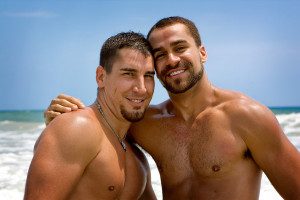
Part II: Identifying and Implementing Your Options
In my previous article, Part I of this topic, I described how in my work as a psychotherapist specializing in gay men and their relationships, very often I see couples expressing a desire to eliminate “cheating” in a relationship by bravely, candidly, and sensitively discussing their options about how and why either or both partners might desire occasional sex outside the relationship, and how this does not have to be unhealthy or damaging to the relationship. Studies of gay male relationships over the years have explained how it is culturally relatively more acceptable in gay male relationships (more so than in any other kind of human relationship) to have a primary partner but allow sexual play with others.
When couples work on this issue in couples counseling, and they embark on a process of identifying the many possible options, much discussion revolves around how each partner is influenced about sex early on from teachings from his family of origin, culture, religious upbringing, and past relationship experiences, and exploring how the two partners differ in these areas. Understanding how each partner came to his conclusions about preferences, desires, and fears regarding love and sex is a first step toward identifying what new options might work as the couple seeks to make changes that lead to additional emotional and sexual fulfillment.
To explore options for non-monogamy that feel safe and minimize jealousy or threatening feelings, we assess the relationship in general, including items such as domestic chores, work life, finances, routines, shared pastimes, individual health issues, friends and social support, and relationships with the “in-laws.” Next, we explore each partner’s view of the couple’s current sex life – the type, frequency, duration, sexual roles, and levels of satisfaction.
Next, we brainstorm the fantasies of each partner that lead them to consider the desire for opening the relationship to outside partners, including what activities are desired and why, and the characteristics of desired partners (race, size, build, age, even “endowment” or sexual “style”). The positive fantasies of desired activities are considered along with the fears that each partner has about exploring the options, such as jealousy, fears of abandonment, personal safety, HIV/STD risk, and even practical time management of how to play with others while still saving free time to share activities in the relationship.
Part of the work is assessing if the couple is ready to consider a non-exclusive arrangement. Author J. Morin (In the Family, Vol. 4, pp. 12-15) has suggested that a gay male couple is prepared to adjust to non-monogamy as long as 1) both partners want their relationship to remain primary; 2) they have established a reservoir of good will; 3) there are minimal lingering resentments from past hurts/betrayals; 4) the partners are not polar opposites on the monogamy issue; 5) the partners are feeling similarly powerful/autonomous as equal partners in the relationship; 6) each partner has friends and support other than his partner, 7) the partners have a higher-than-average tolerance for change, confusion, anxiety, jealousy, and other uncomfortable feelings; and 8) the couple is merely sexually bored but very secure and loving with each other. When these items are mostly satisfied, a safe exploration of options can begin.
The next step in the counseling process is to discuss the Ideal Proposed Scenario, a time to start the new arrangement, and a time set to evaluate, discuss, make changes, and re-evaluate the arrangement. The final step is having each partner fill out a written exercise I developed called the Outside Sex Contract Agreement. Each partner fills out one of these forms, and uses it as the basis for discussing how outside sex might manifest in their relationship – and each relationship is unique and arrives at a different set of agreed-upon parameters. After this agreement is made, and after some time to experiment with the new arrangement (perhaps a couple of months), the couple has a discussion and evaluates each of their experiences, and agrees to make changes to the original agreement if necessary. During these processes, each partner is careful to be responsive to the concerns of the other to preserve a sense of safety, respect, intimacy, and trust.
With these steps completed, the couple moves forward confidently that they have worked through the conflict regarding outside sex with open, safe communication and confidence that the love they share for each other is secure, while embarking on exciting changes that lead to increased fulfillment and satisfaction in the relationship for each of them – with no more “cheating” dynamics to detract from their quality of life.
***************************************
For more information on our therapy or coaching services, either in LA, or via webcam/phone, or to make an appointment for a consultation, call/text 310-339-5778, or email Ken@GayTherapyLA.com.
For other information, visit our Instagram at GayTherapyLA.
If you would like more content, subscribe to the GayTherapyLA podcast, here: https://itunes.apple.com/us/podcast/gay-therapy-la-with-ken-howard-lcsw/id1450860786?mt=2.


